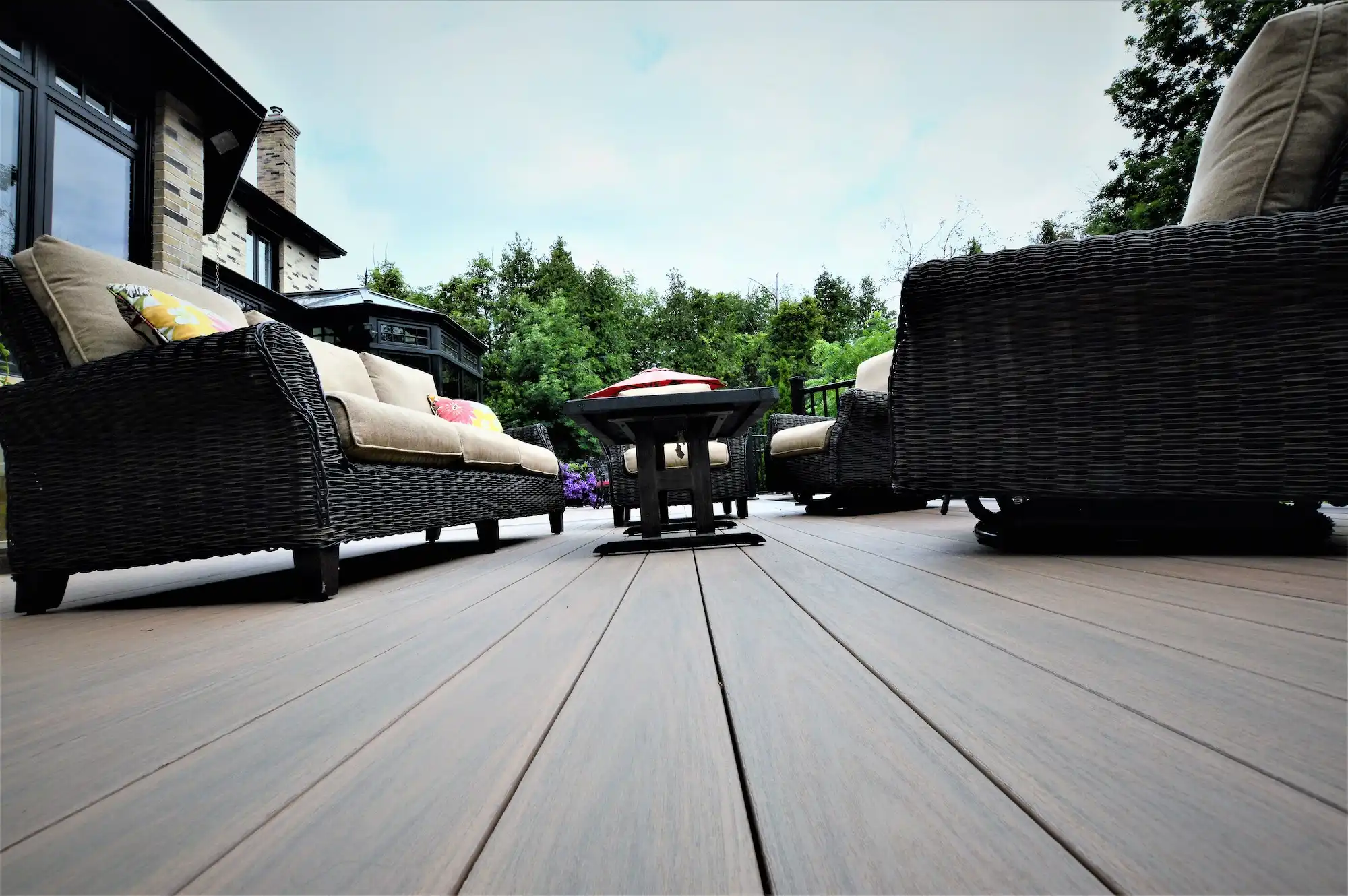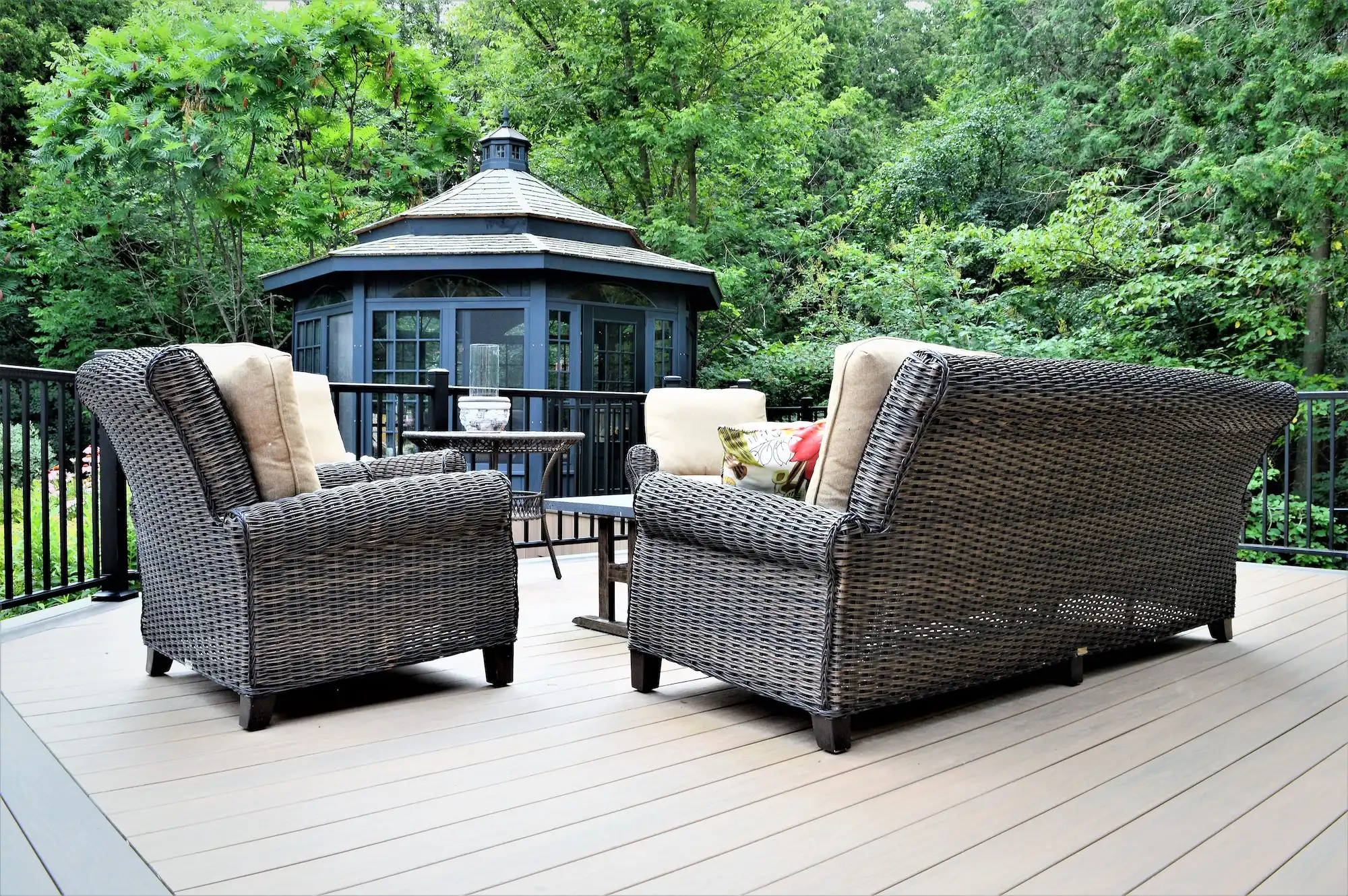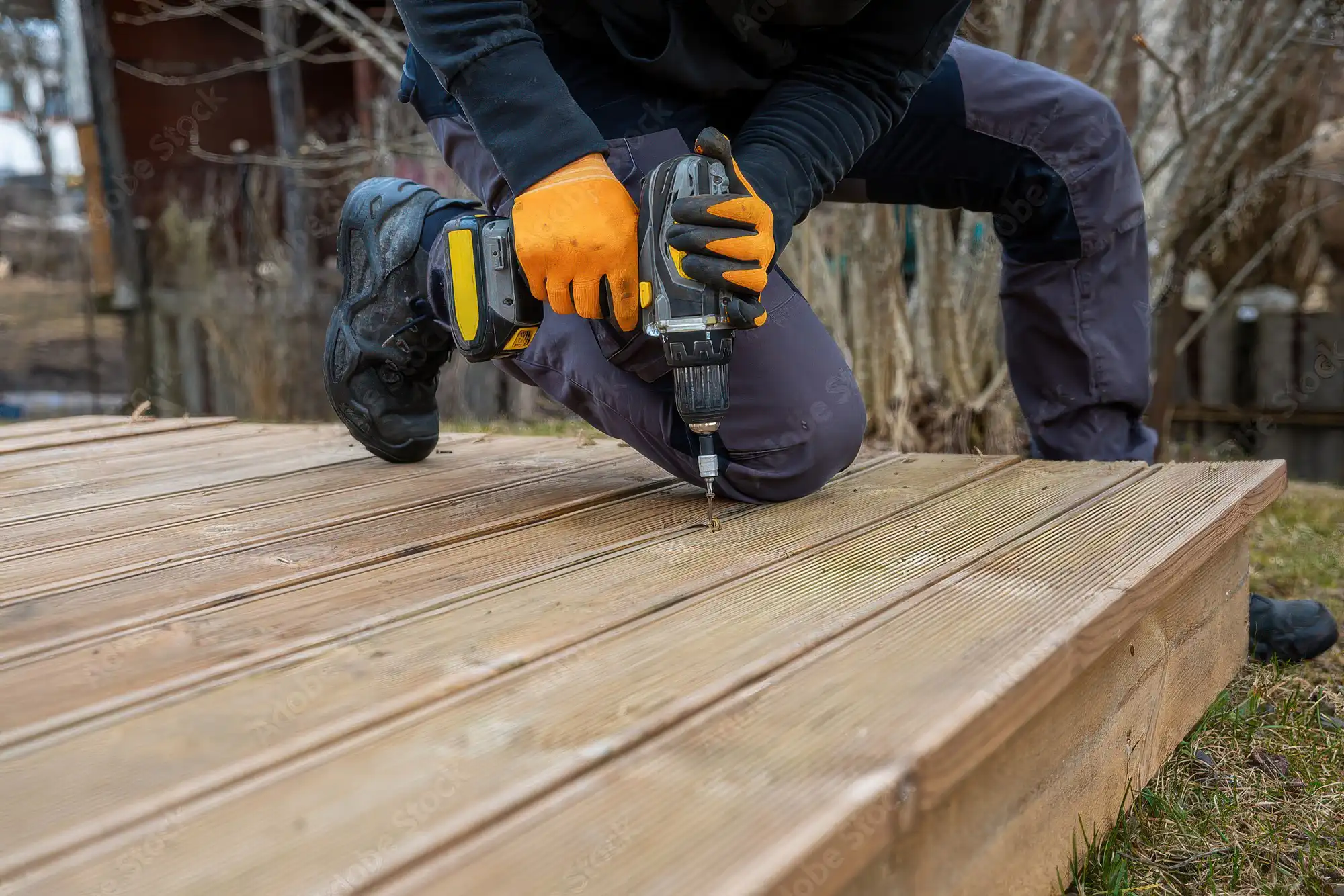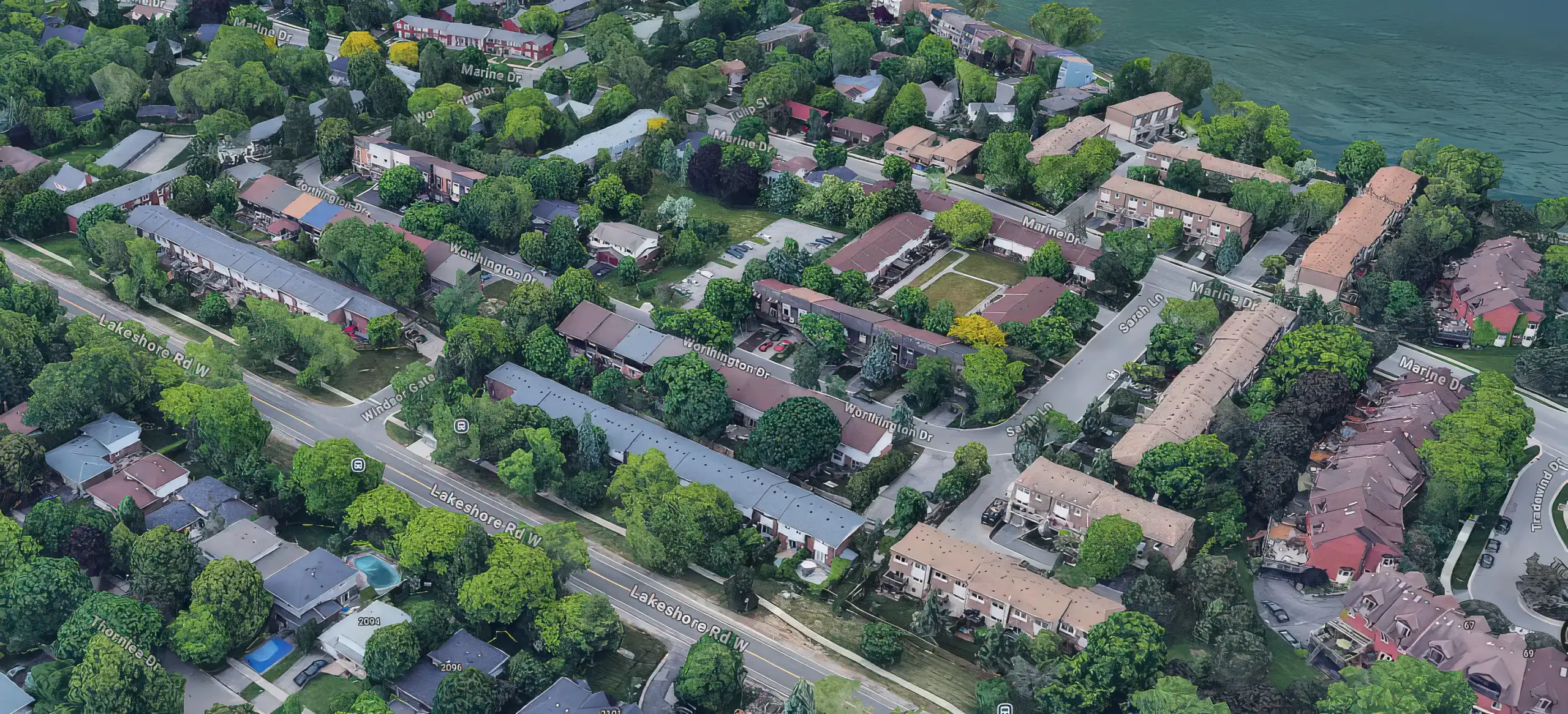The world of decking has evolved significantly in recent years, with homeowners increasingly looking beyond traditional wood options. Composite and PVC decking materials have gained substantial popularity due to their durability, low maintenance requirements, and aesthetic appeal. In this article, we’ll explore the growing trend of composite and PVC decking, examining their composition, benefits, and why they’re becoming the go-to choice for many homeowners.
Composite Decking: A Revolutionary Alternative
Composition and Manufacturing Process
Composite decking is an innovative material that combines the best of both worlds – wood and plastic. It’s typically made from a mixture of recycled wood fibers and plastic, creating a durable and eco-friendly product.

The manufacturing process involves:
- Combining wood fibers (often from recycled sources) with plastic polymers
- Adding UV inhibitors, pigments, and other additives for color and protection
- Extruding the mixture into deck boards with various textures and finishes
Types: Capped and Uncapped
Composite decking comes in two main types:
- Capped composite:
Features a protective outer layer for enhanced durability and stain resistance - Uncapped composite:
More affordable but less resistant to fading and staining
Performance Characteristics
Composite decking offers several advantages over traditional wood:
- Resistance to moisture, rot, and insect damage
- Low maintenance requirements – no need for regular staining or sealing
- Consistent appearance without knots or splinters
- Available in a wide range of colors and textures
For a more in-depth look at composite options, check out our guide on TimberTech composite decking.
PVC Decking: The Ultimate in Low Maintenance
Material Properties
PVC (Polyvinyl Chloride) decking is a fully synthetic option that offers exceptional durability and resistance to the elements. Key properties include:
- 100% plastic composition – no wood fibers
- Extremely resistant to moisture, mold, and mildew
- Lightweight yet strong
- Available in a variety of colors and wood-grain textures
Advantages Over Wood and Composite
PVC decking offers several benefits compared to both wood and composite options:
- Zero water absorption, preventing warping or swelling
- Highly resistant to scratches and stains
- Cooler to the touch in direct sunlight
- Easier to clean and maintain
For a comprehensive overview of PVC decking, take a look at our article on Wolf PVC decking.
Environmental Considerations
While PVC is not biodegradable, many manufacturers use recycled materials in their production process. Additionally, the longevity of PVC decking means less frequent replacement, potentially reducing long-term environmental impact.

Market Trends
The composite and PVC decking market is experiencing significant growth, driven by increasing awareness of low-maintenance options, rising demand for sustainable building materials, and advancements in manufacturing technology. While popularity varies by region, North America leads in adoption, with Canada showing increased interest due to the materials’ ability to withstand harsh weather conditions.
Projections indicate continued expansion in the coming years, as homeowners increasingly prioritize low maintenance requirements, long-term durability, eco-friendly options, and customization possibilities. These trends are shaping the market landscape and influencing product development, with manufacturers focusing on improving quality, aesthetics, and sustainability to meet evolving consumer preferences.
Durability and Longevity
Composite and PVC decking materials offer exceptional durability, low maintenance, and long-term value compared to traditional wood options. Below are the key features of these materials:
| Aspect | Details |
| Weather Resistance |
|
| Rot, Insect & Fading Resistance |
|
| Lifespan |
|
| Maintenance Requirements |
|
| Aesthetic Options |
|
Installation Considerations
Comparison with Wood Installation
Installing composite and PVC decking is similar to wood in many ways, but with some key differences:
- Often lighter weight, making handling easier
- May require special fasteners or hidden fastening systems
- Expansion and contraction must be accounted for in the design
Professional vs. DIY Installation
While DIY installation is possible, professional installation is recommended for several reasons:
- Ensures proper gapping for expansion and contraction
- Correct use of fastening systems for optimal performance
- Knowledge of brand-specific installation requirements
For professional installation services, consider contacting our deck designers.
Cost Analysis
Initial Costs vs. Long-term Value
While composite and PVC decking materials often have higher upfront costs compared to wood, they offer long-term value:
- Reduced maintenance costs over time
- Longer lifespan, delaying replacement needs
- Potential increase in home value due to low-maintenance features
Environmental Impact
Recycled Content
Many composite decking products contain a high percentage of recycled materials:
- Reclaimed wood fibers from the lumber industry
- Recycled plastics, often from post-consumer sources
Sustainability Practices in Manufacturing
Manufacturers are increasingly focusing on sustainable production methods:
- Closed-loop water systems in factories
- Use of solar power and other renewable energy sources
- Reduction of waste in the manufacturing process
End-of-life Recyclability
While not as easily recyclable as natural wood, some composite and PVC decking materials can be recycled at the end of their life cycle, contributing to a more circular economy.
Innovations in Composite and PVC Decking
| Feature | Details |
| Heat-resistant Technologies |
|
| Enhanced Slip Resistance |
|
| Smart Features Integration |
|
Conclusion
The growing popularity of composite and PVC decking materials is a testament to their numerous benefits over traditional wood decking. With superior durability, low maintenance requirements, and an ever-expanding range of aesthetic options, these materials are revolutionizing outdoor living spaces. While the initial investment may be higher, the long-term value, coupled with environmental benefits, makes composite and PVC decking an attractive choice for modern homeowners.
As technology continues to advance, we can expect even more innovations in this field, further enhancing the appeal of these alternative decking materials. Whether you’re building a new deck or replacing an old one, considering composite or PVC options could lead to a beautiful, long-lasting outdoor space that requires minimal upkeep.
For more information on decking options and to start your project, contact our deck designers today.
You can also follow us on Facebook and Instagram for more deck design ideas and inspiration.



